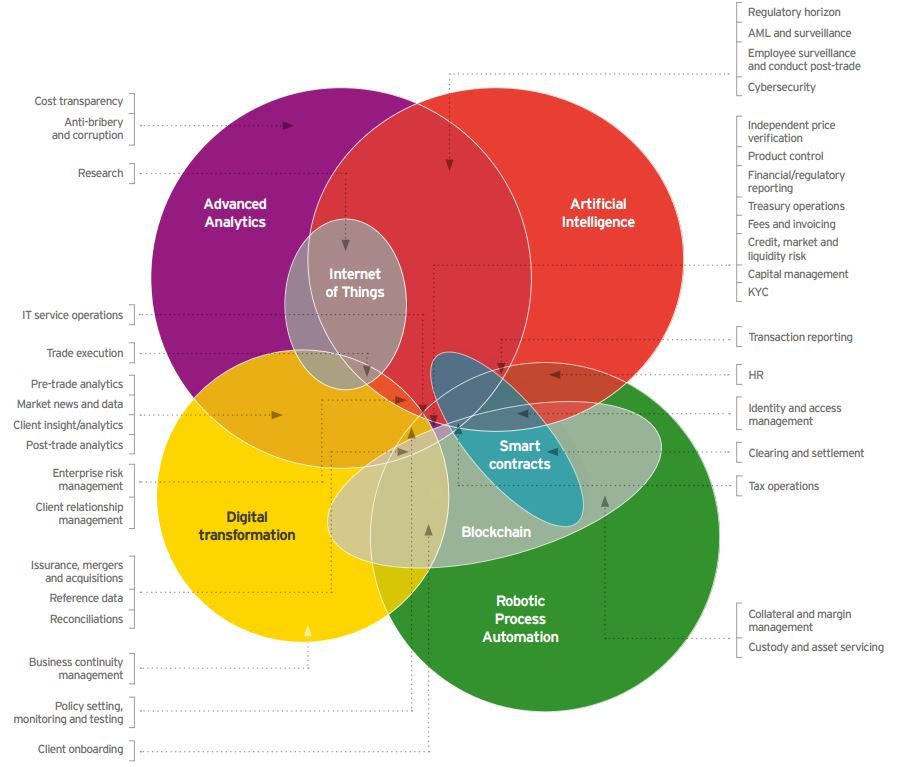Science fiction films, literature, and other media have showcased various technologies of the future. Such technologies include artificial intelligence (A), robots, nanotechnology, and many others. Blockchain technology is less often featured. However, blockchains may be one of the most important pieces of future tech currently evolving and integrating itself into society.
Swisscom and Swiss Post are working to integrate a private blockchain infrastructure within Switzerland. Similarly, 27 European nation states are signatories of the European Blockchain Partnership (EBP). Together, they are developing the European Blockchain Services Infrastructure (EBSI) to integrate blockchain technology throughout Europe.
However, some analysts are limiting the usage of blockchain technology to specific markets. This prevents a thorough understanding of how blockchains can be integrated into general society. One benefit of these analyses, however, is that they present blockchains as one of several technologies which, when implemented together, increase the overall efficacy of each.
SponsoredBlockchains in the Capital Market
Blockchain technology intersects with many other technologies of the future. Its integration into society is not likely to occur without the assistance of other evolving technologies. Ernest & Young (EY), one of the world’s largest multinational professional services firms, indicated this back in 2017 when it examined the use of seven technologies within the capital market landscape.
When blockchains are used with robotic process automation, digital transformation technologies, advanced analytics, or artificial intelligence (AI), various financial uses develop.
First, more secure and efficient methods of managing or servicing enterprise risk, business-client relations, collateral, margins, custody, and a variety of assets appear. Furthermore, evolved forms of client on-boarding might also be realized when blockchain, digital transformation, and robotic automation collide. Additionally, human resources also benefit from the uses of blockchain with artificial intelligence.
None of these uses require the integration of smart contracts. As such, first-generation cryptocurrencies like Bitcoin (BTC), Litecoin (LTC), or Peercoin (PPC) could be used for these purposes if integrated with other technologies. However, when second-generation smart contract platforms like Ethereum (ETH), Tron (TRX), or EOS (EOS) are used, the financial uses of blockchain technology increase to include tax operation and others.
Beyond the Capital Market
There are several problems with this infographic, however.

First, the use-value of blockchains and other technologies of the future are restricted to the capital market. This creates another problem, in that “blockchain” is sequestered from other technologies — namely, the Internet of Things (IoT). When IOT and blockchain are integrated, evolved forms of smart technology — including wearables, media, agriculture, and more — become possible outside of the domain of the capital market.
SponsoredWhen limited to the capital market, blockchains develop uses only as financial technology (fintech). Their holistic usage as a general technology can disrupt various industries and markets. Furthermore, there are only seven technologies included in this infographic, but the list of future tech with which blockchains can integrate is much larger.
https://twitter.com/BigData_Joe/status/1086320559489597440
Lastly, the existence of decentralized applications (dApps) is not included in the research presented by EY.
Included within the infographic are blockchains and blockchains with smart contracts. While dApps may be implied by the intersection of smart contract-based blockchains with other technologies, this is not specified. As such, whether or not dApps are accounted for in this infographic is not determinable.
SponsoredConclusion
While the purpose of the EY infographic may have been to showcase the integration of certain technologies within the capital market landscape, it presents a limited range of uses for blockchain technology.
[bctt tweet=”While blockchains do exist as a piece of fintech (financial technology), their usage as technology expands beyond the category of finance.” username=”beincrypto”]
Content creation and distribution, sharing of non-financial data, crowd-funding, social media creation and usage, and other purposes of blockchain technology can be realized outside of the capital market and beyond the restrictions of fintech.
How do you think blockchains can be integrated with other future-tech to increase their use-value? Let us know in the comments below!




